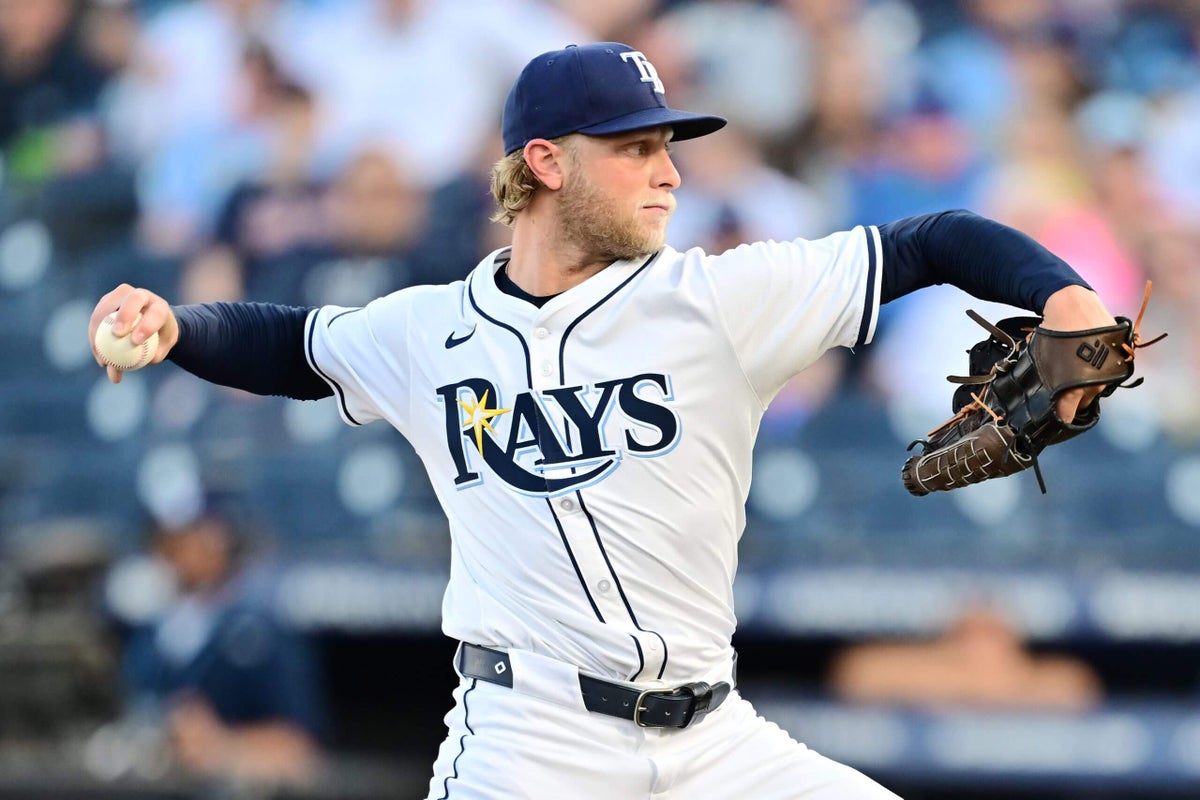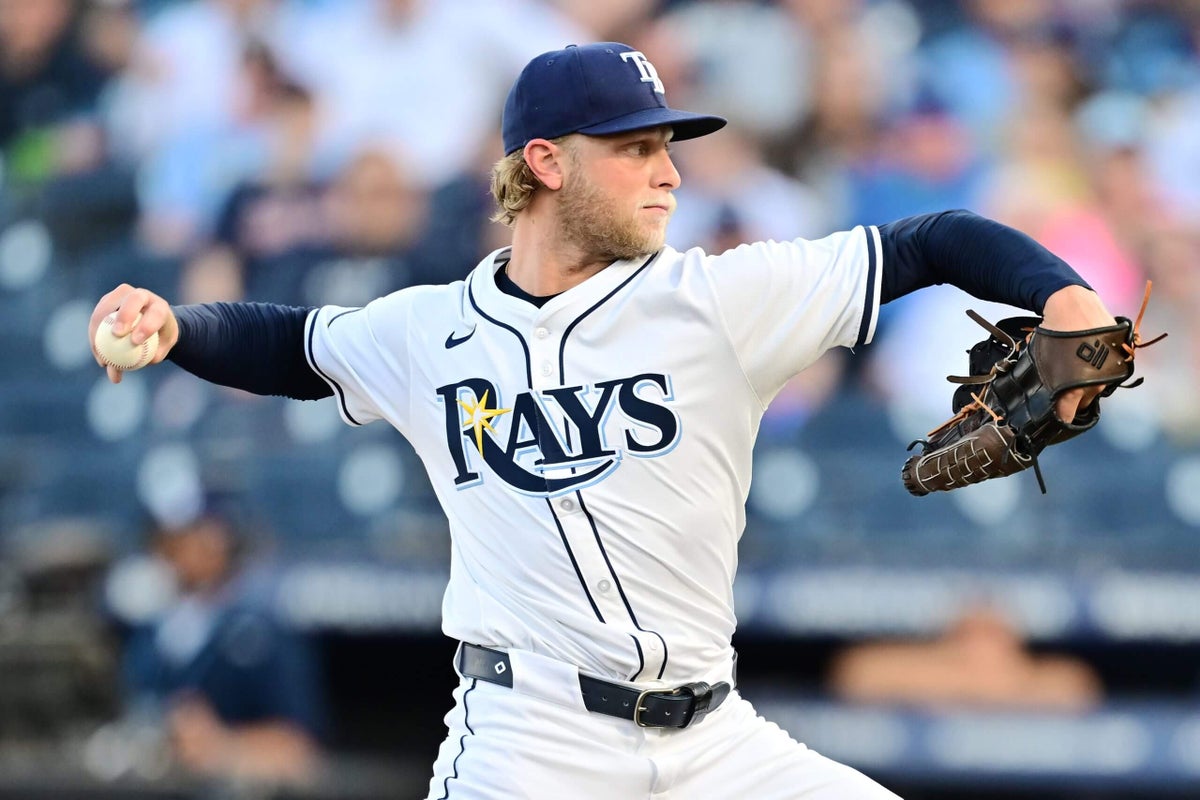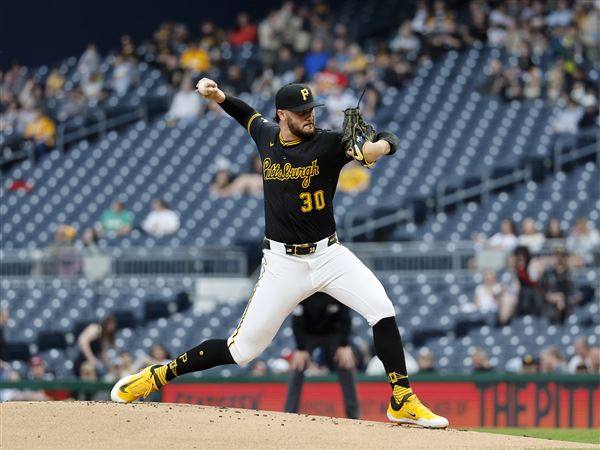
Every year, we have a hot start from a relatively new pitcher, and every year, we stare holes into them as we try to figure out if this is a legitimately new level or just a good streak. This year’s no different, but the tools we can use in small samples have improved.
These breakout pitchers have made at least three starts this season and last year, have fewer than 100 career starts and were sorted by the difference between their ERA so far this year and their ERA last year. Many of them you’ll recognize from our preseason sleeper lists.
2025’s breakout starting pitchers
|
Name
|
Team
|
25 ERA
|
24 ERA
|
Diff ERA
|
|---|---|---|---|---|
|
NYY |
5.14 |
10.32 |
-5.18 |
|
|
MIA |
2.63 |
5.68 |
-3.06 |
|
|
BAL |
3.60 |
5.20 |
-1.60 |
|
|
LAD |
1.23 |
3.00 |
-1.77 |
|
|
TBR |
1.42 |
3.06 |
-1.64 |
|
|
SDP |
1.74 |
4.87 |
-3.13 |
|
|
WSN |
1.85 |
4.29 |
-2.44 |
|
|
STL |
2.20 |
3.78 |
-1.58 |
|
|
BOS |
1.38 |
3.58 |
-2.19 |
|
|
CIN |
2.31 |
4.76 |
-2.45 |
|
|
ARI |
3.04 |
4.71 |
-1.66 |
|
|
DET |
2.60 |
4.49 |
-1.89 |
|
|
HOU |
1.50 |
3.49 |
-1.99 |
|
|
NYM |
1.40 |
4.04 |
-2.64 |
Pitching stats are through Wednesday’s games.
Nestled in this list are some pitchers for whom we’ve already made cases (Max Meyer, Tylor Megill and Casey Mize are making good on the changes we already saw under the hood in the spring) and pitchers who’ve already established themselves (Garrett Crochet, Hunter Brown and Yoshinobu Yamamoto aren’t really “breaking out,” per se). Let’s pick out some players who have more murky futures and see what their pitches are telling us.
Advertisement
Shane Baz, Rays
From last year to this year, Shane Baz has:
• Added a tick and a half to his fastball velocity
• Added movement in both dimensions to his curveball
• Upped his curveball usage by half
• Added movement in both dimensions to his slider
• Added more velocity and arm-side movement to his changeup
The most important thing might be that he’s discovered the curveball is his best weapon and is using it more. That’s what the Stuff models suggest he should do, and it’s leading to tons of strikeouts and not many walks.
It’s a great pitch that can work against both sides, and his changeup and slider are probably good enough to give him a wide arsenal. The only risk is that batters are swinging at this curveball more than they usually do, and the Stuff model says to expect fewer swings going forward. That might mean more walks and fewer strikeouts, but the sum of a player with this good of a fastball and curve is one with a good strikeout rate and an ERA in the mid-fives. He shouldn’t be available in any leagues.
Brandon Pfaadt, Diamondbacks
The story for Brandon Pfaadt is that his sinker and sweeper make him dominant against right-handers, but leave him susceptible to damage from left-handers. This year, lefties are slugging .516 against him, just around the .495 mark he has for his career. So, nothing to see here. He’ll still struggle against lefties?
Maybe, but that doesn’t mean nothing has changed. Take a look at his mix against lefties last year vs. this season, and the difference is fairly stark.
Pfaadt’s new mix vs lefties
| Pitch | 2024 | 2025 |
|---|---|---|
|
Four-seamer |
39% |
34% |
|
Changeup |
21% |
27% |
|
Curveball |
10% |
21% |
|
Sweeper |
16% |
9% |
|
Sinker |
13% |
9% |
Once you factor in both stuff and locations, this is a smart move for Pfaadt. He’s dialed down the sinker and sweeper, which are 20 points of Pitching+ worse against lefties than righties, and dialed up the use of the curve, which is 20 points better against lefties than righties.
This is the correct move in theory, but lefties have hit three homers off that curveball and are slugging .929 against the pitch. Pfaadt remains a liability against offenses that fill up on lefties, despite an interesting adjustment against them.
Advertisement
Mitchell Parker, Nationals
It’s tempting to give Mitchell Parker the seal of approval. He’s 25, has a decent four-pitch mix and command, and shouldn’t have too much competition for his rotation spot in the capital this year. On the other hand, he doesn’t have a single pitch that registers above-average by Stuff+ and sits 93 mph. He’s also only struck out 15.8 percent of the batters he’s seen so far and 19.9 percent in his career.
Here’s the list of pitchers who didn’t have an above-average pitch by Stuff+ over the past three seasons with a strikeout rate less than 20 percent and at least 150 innings: Ben Lively, Brady Singer, Chris Flexen, Cole Irvin, Dane Dunning, Johnny Cueto, Jose Quintana, Kyle Freeland, Marco Gonzales, Marcus Stroman (last season), Mikes Mikolas (twice) and Patrick Corbin (twice). They collectively had a 4.40 ERA with a 17 percent strikeout rate.
Is it possible the model is missing something about the splitter, which had a .400 slugging percentage last year but is currently sporting a .182? Maybe. But given where he throws the pitch, this is the most common look a hitter has at Parker’s splitter right now.
Seems like hitters will get to that pitch eventually. Be very careful with Parker.
Andre Pallante, Cardinals
He’s always had a good sinker, that Andre Pallante. And that’s ported over to starting, even as he’s lost velocity on the pitch. He’s thrown one of them to left-handers, so he’s got the same weakness against lefties as other sinker/slider guys. He doesn’t have a pitch that rates above average against lefties by Stuff+ and by Pitching+; it’s only the four-seam, because he locates it well. But three OK pitches with command against lefties and a super-sinker against righties is possibly a little underrated.
Advertisement
Think of it this way. Here are all the pitchers with a ground-ball rate over 60 percent and 130 innings over the past two years: Pallante and José Soriano, with Framber Valdez right there as well. It’s boring, and he won’t maintain this production, but could he have a high-threes ERA with a high WHIP and fewer strikeouts than your average pitcher … and still be useful at the right times in the right leagues? For sure.
Will Warren, Yankees
Here’s a surprising success story, maybe, especially given his current ERA. Will Warren is not a true-talent, 5.00 ERA starter, especially not if his current pitch movements are to be believed. There’s red all over his Statcast movement pages, and not just in the horizontal section, where all of his pitches are above-average. His sinker, change and four-seam all get above-average vertical movement, too.
Wait. The four-seam, with 16.9 inches of vertical movement, that gets above-average vertical movement? Barely, if you look at the average of all pitchers. But Warren is a low-slot guy, with a 27-degree arm angle. Even though he gets nearly three inches less vertical break than Bryce Miller, who is more over the top at 45 degrees, Warren’s vertical movement over expectation, given his arm slot, is about the same as Miller’s! You can play with this stat on Alex Chamberlain’s new leaderboard (where it’s listed as V ACC OE), but it also factors into Warren’s above-average Stuff+ on the pitch.
This pitch, which looks innocuous even when hitters miss it, is extremely important. If it’s truly above-average, it gives him a fastball he can use against lefties, along with a hit-or-miss changeup, a sweeper that is better against righties than lefties and a curve that he should probably use more often. Hey, it’s not a perfect collection of strengths, but he should be rostered in way more leagues than he is. If you’re looking for a speculative add, he’d be great.
(Photo of Shane Baz: Julio Aguilar / Getty Images)



